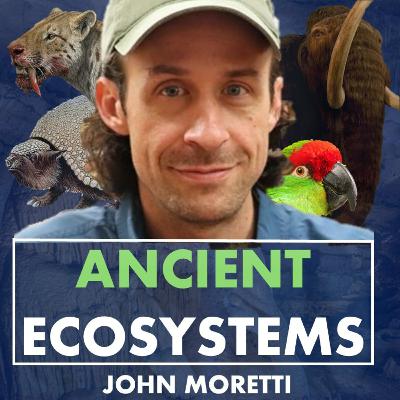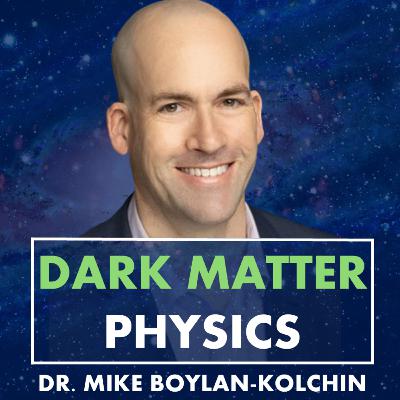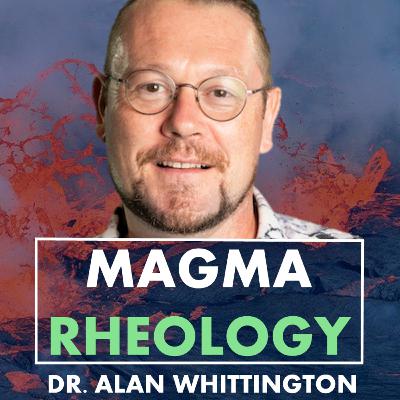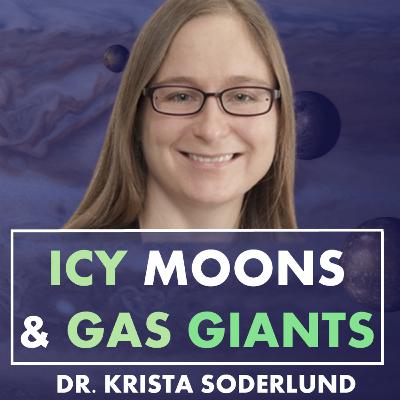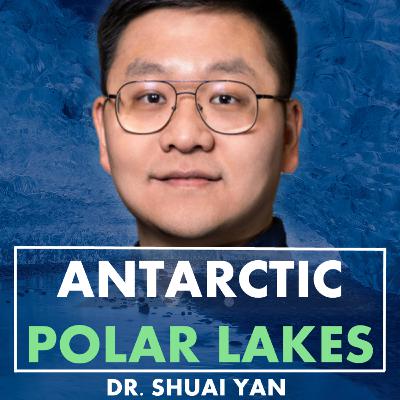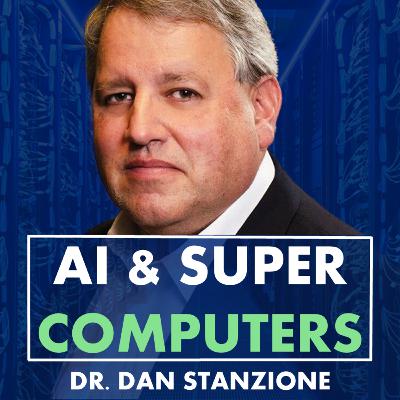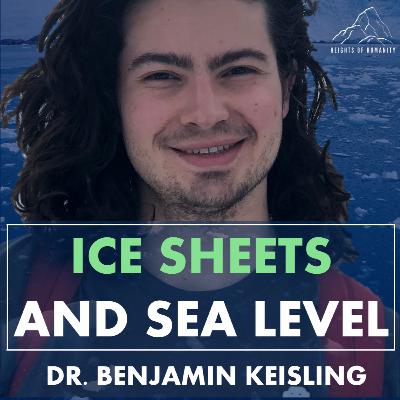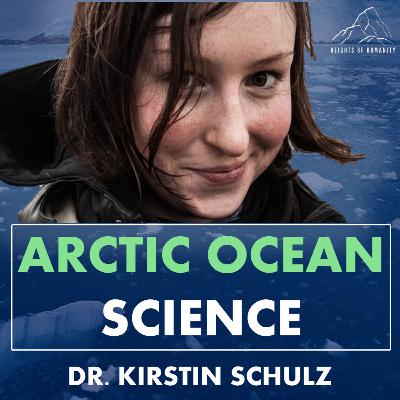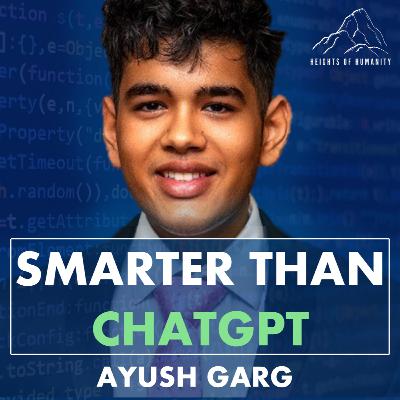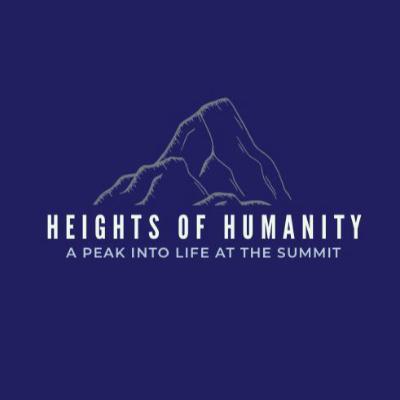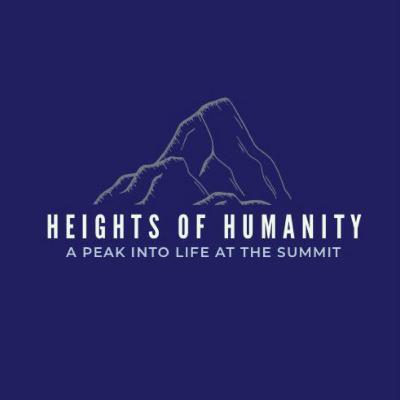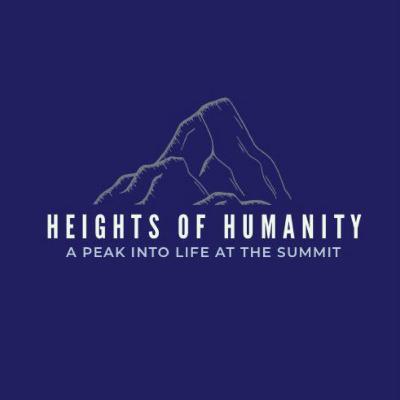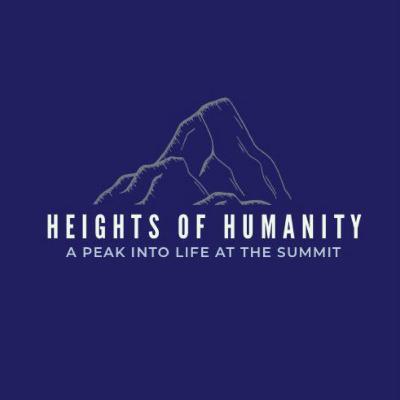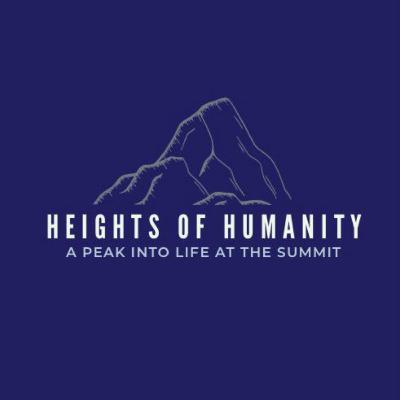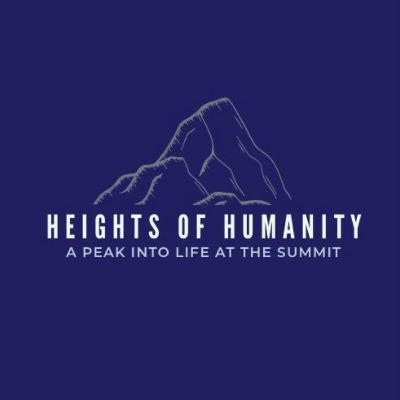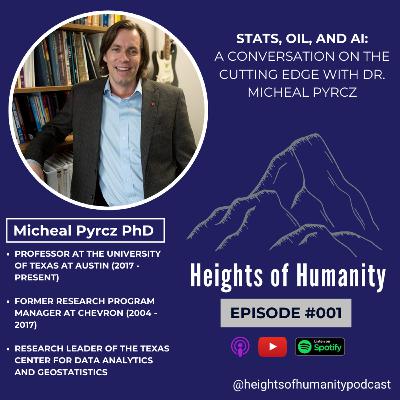Discover Heights of Humanity
Heights of Humanity

Heights of Humanity
Author: Jason Bott
Subscribed: 0Played: 0Subscribe
Share
© Jason Bott
Description
Heights of Humanity delves into the minds and lives of knowledgeable and successful individuals throughout various fields. This podcast is a platform to spotlight a plethora of amazing insights, tools for success, deep knowledge of specific niches, and more.
19 Episodes
Reverse
In this episode, I had the pleasure of speaking with John Moretti, a PhD student at the University of Texas at Austin who travels deep into caves to study ancient animals of the Pleistocene & Holocene.This podcast has no affiliation with the University of Texas or the University of Texas Institute for Geophysics. However, it is part of my goal to make quality educational content with real experts accessible to the public for no charge whatsoever.Sources & Further Reading:“Ugly” Fossil Places Extinct Saber-Toothed Cat on Texas Coast:https://www.jsg.utexas.edu/news/2024/...Moretti, J. A., & Johnson, E. (2023). Small rails from the late Quaternary of the Southern High Plains and their palaeoenvironmental context. Ibis, 165(4), 1280–1295.https://doi.org/10.1111/ibi.13212Moretti, J. A., Flores, D., Bell, C. J., Godwin, W., Hartstone‐Rose, A., & Lewis, P. J. (2024). The scimitar‐cat Homotherium from the submerged continental shelf of the Gulf Coast of Texas. The Anatomical Record.https://doi.org/10.1002/ar.25461Scientists Closing in on Answers About ‘Lost’ Prehistoric Cats of Natural Bridge Caverns:https://www.jsg.utexas.edu/news/2024/...Nogués-Bravo, D., Rodríguez, J., Hortal, J., Batra, P., & Araújo, M. B. (2008). Climate change, humans, and the extinction of the woolly mammoth. PLoS Biology, 6(4), e79.https://doi.org/10.1371/journal.pbio....Scientists take a step closer to resurrecting the woolly mammoth:https://www.npr.org/sections/health-s...John MorettiWebsite:https://www.jsg.utexas.edu/student/jo...Publications:https://www.researchgate.net/profile/...Instagram: / stray_sabercat Jason Bott & Podcast SocialsGoogle Scholar:https://scholar.google.at/citations?h...Twitter:https://x.com/JasonBott316244 Insta:/ heightsofhumanitypodcast TikTok:/ heightsofhumanity Linkedin:/ jason-bott-a52944270 RSS:https://anchor.fm/s/ebd6a240/podcast/rssWebsite:https://www.heightsofhumanitypodcast.com
In this episode, I had the pleasure of chatting with Dr. Mike Boylan-Kolchin, a research professor of Cosmology & Astrophysics at the University of Texas at Austin. Dr. Boylan-Kolchin's research delves deep into the origins of Galaxies within our universe, using data gathered from highly advanced telescopes to observe cosmic radiation left over from the formation of the universe. He also studies Dark Matter & Dark Energy, the former being hypothesized as the "glue" that holds galaxies together.
Mentioned Articles and Further Reading:
Vera C Rubin Observatory
Nancy Grace Roman Space Telescope
James Webb Space Telescope (JWST)
Qi Guo, Simon White, Raul E. Angulo, Bruno Henriques, Gerard Lemson, Michael Boylan-Kolchin, Peter Thomas, Chris Short, Galaxy formation in WMAP1 and WMAP7 cosmologies, Monthly Notices of the Royal Astronomical Society, Volume 428, Issue 2, 11 January 2013, Pages 1351–1365, https://doi.org/10.1093/mnras/sts115
Michael Boylan-Kolchin, James S. Bullock, Manoj Kaplinghat, Too big to fail? The puzzling darkness of massive Milky Way subhaloes, Monthly Notices of the Royal Astronomical Society: Letters, Volume 415, Issue 1, July 2011, Pages L40–L44, https://doi.org/10.1111/j.1745-3933.2011.01074.x
Mentioned Scientists:
Carl Gebhardt
Deirdre Shoemaker
Neil deGrasse Tyson
Dan Stanzione
Mentioned Episodes:
Deirdre Shoemaker
Dan Stanzione
Dr. Boylan-Kolchin:
Google Scholar | Academic Profile | Twitter
Jason Bott & Podcast Socials
Google Scholar | Twitter | Instagram | TikTok | Linkedin| RSS | Website
In this episode, I had the pleasure of chatting with Dr. Alan Whittington, a research professor at the University of Texas at San Antonio (UTSA) and director of the HAMsTER Lab at UTSA. Dr. Whittington specializes in studying heat and mass transfer and experimental rheology at extreme temperatures and pressures, which he and his team can create uniquely in their state-of-the-art laboratory.
HAMsTER Lab
Mentioned Articles and Further Reading:
NSF Study on Deadlines
Sweetman, A.K., Smith, A.J., de Jonge, D.S.W. et al. Evidence of dark oxygen production at the abyssal seafloor. Nat. Geosci. 17, 737–739 (2024). https://doi.org/10.1038/s41561-024-01480-8Tolbachik VolcanoStudy on Lunar Regolith BricksThermophysical Study of Moon RocksEuropan Cryolava
Mentioned Scientists:
Doug HemingwayJim HeadBen EdwardsDan Stanzione
Mentioned Episodes:
Doug HemingwayDan Stanzione
Dr. Alan Whittington:
Google Scholar | Academic Profile | HAMsTER Lab | Twitter | Linkedin
Jason Bott & Podcast Socials
Google Scholar | Twitter | Instagram | TikTok | Linkedin| RSS | Website
Dr. Soderlund is always such a treat to chat with. I'm always in awe of how she effortlessly glides through and explains complex topics that bend and break my intuition of the physical sciences. This episode contains some extraordinary stuff, from metallic hydrogen and helium rain under Jupiter's thick clouds to sideways convection currents in Europa's massive sub-ice oceans.
Mentioned Publications and Further Reading:
Howell, S.M., Pappalardo, R.T. NASA’s Europa Clipper—a mission to a potentially habitable ocean world. Nat Commun 11, 1311 (2020). https://doi.org/10.1038/s41467-020-15160-9
Mark Hofstadter, et al., Uranus and Neptune missions: A study in advance of the next Planetary Science Decadal Survey, Planetary and Space Science, Volume 177, 2019, 104680, ISSN 0032-0633, https://doi.org/10.1016/j.pss.2019.06.004.
Soderlund, K. M. (2019). Ocean dynamics of outer solar system satellites. Geophysical Research Letters, 46, 8700–8710. https://doi.org/10.1029/2018GL081880
Soderlund, K., Schmidt, B., Wicht, J. et al. Ocean-driven heating of Europa’s icy shell at low latitudes. Nature Geosci 7, 16–19 (2014). https://doi.org/10.1038/ngeo2021
Soderlund et al., The influence of magnetic fields in planetary dynamo models, Earth and Planetary Science Letters, Volumes 333–334, 2012, Pages 9-20, ISSN 0012-821X, https://doi.org/10.1016/j.epsl.2012.03.038
Mentioned Scientists:
Don Blankenship
Doug Hemingway
Luc Lavier
Dave Stevenson
Corey Cochrane
Daphné Lemasquerier
Dr. Krista Soderlund
Google Scholar | Profile
Jason Bott & Podcast Socials
Google Scholar | Twitter | Instagram | TikTok | Linkedin | RSS | Website
In this episode, I had the pleasure of speaking with Dr. Shuai Yan. Dr. Yan received his Doctorate Degree from the University of Texas at Austin, advised by Don Blankenship. He (at the time of this episode's release) has recently started as a Postdoc at the University of Washington where he plans to study Polar Geophysics & Glaciology through Geophysical observations and high-performance computer models.
Dr. Shuai has always impressed me in a multitude of ways. In the time I've known him, I've seen him not only obtain a PhD in his non-native language but mentor students (myself included) AND publish high-impact research along the way. He's taken part in multiple Antarctic expeditions, which he discusses in the podcast. In addition to Polar fieldwork, expect to learn about Subglacial Lakes & Hydrology, Aerogeophysics, how we use Radars to "x-ray" ice, and bits of wisdom on human nature, scientific outreach, and the potential future of mankind.
This podcast has no affiliation with the University of Texas or the University of Texas Institute for Geophysics. However, it is part of my goal to make quality educational content with real experts accessible to the public for no charge whatsoever.
Mentioned Publications & Further Reading:
Shuai Yan et al.; A newly discovered subglacial lake in East Antarctica likely hosts a valuable sedimentary record of ice and climate change. Geology 2022; 50 (8): 949–953. doi: https://doi.org/10.1130/G50009.1
Benjamin A. Keisling et al.; Pliocene–Pleistocene megafloods as a mechanism for Greenlandic megacanyon formation. Geology 2020;; 48 (7): 737–741. doi: https://doi.org/10.1130/G47253.1
Livingstone, S.J., Li, Y., Rutishauser, A. et al. Subglacial lakes and their changing role in a warming climate. Nat Rev Earth Environ 3, 106–124 (2022). https://doi.org/10.1038/s43017-021-00246-9
Mentioned Scientists:
Dr. Benjamin Keisling
Dr. Don Blankenship
Mentioned Episode(s):
Dr. Benjamin Keisling | Ice Sheet Evolution, Sea Level, Climate Change & Isostatic Rebound
Dr. Shuai Yan
Google Scholar | Linkedin | Twitter
Jason Bott & Podcast Socials
Google Scholar | Twitter | Instagram | TikTok | Linkedin | Website
In this episode, I had the absolute honor of speaking with Dr. Dan Stanzione. Dr. Stanzione is the director of the Texas Advanced Computing Center (TACC) and the Vice President for Research at the University of Texas at Austin.
Dr. Stanzione has served as the Primary Investigator (PI) for the development of countless multimillion-dollar supercomputer facilities/systems, such as Frontera, Lonestar 6, and most recently, Horizon & the LCCF. Dr. Stanzione and the supercomputer he helps build directly influence research across not only the University of Texas, but the whole of Academia.
This podcast has no affiliation with the University of Texas or the University of Texas Institute for Geophysics. However, it is part of my goal to make quality educational content with real experts accessible to the public for no charge whatsoever.
Sources & Further Reading:
Stanzione, D., West, J., Evans, R. T., Minyard, T., Ghattas, O., & Panda, D. K. (2020). Frontera: The Evolution of Leadership Computing at the National Science Foundation. Practice and Experience in Advanced Research Computing. https://doi.org/10.1145/3311790.3396656
Guest Lecture at Rice University
Recent Guest Lecture
Krizhevsky, Alex, et al. “ImageNet classification with deep convolutional Neural Networks.” Communications of the ACM, vol. 60, no. 6, 24 May 2017, pp. 84–90, https://doi.org/10.1145/3065386.
Timeline of AI
Yifan Yao, Jinhao Duan, Kaidi Xu, Yuanfang Cai, Zhibo Sun, Yue Zhang,A survey on large language model (LLM) security and privacy: The Good, The Bad, and The Ugly, High-Confidence Computing, Volume 4, Issue 2, 2024, 100211, ISSN 2667-2952, https://doi.org/10.1016/j.hcc.2024.100211.
Dr. Dan Stanzione
Website
Google Scholar
https://www.linkedin.com/in/dan-stanzione-88ba41/
Jason Bott & Podcast Socials:
Google Scholar
Twitter
https://www.instagram.com/heightsofhumanitypodcast/https://www.tiktok.com/@heightsofhumanity
https://www.linkedin.com/in/jason-bott-a52944270/
RSS: https://rss.com/podcasts/heightsofhumanity/
Website: https://www.heightsofhumanitypodcast.com
In this episode, I had the absolute pleasure of speaking with Dr. Bruno Cucco. Dr. Cucco is a Postdoctoral Researcher at the University of Texas at Austin where he specializes in the development of new materials for optoelectronic applications (i.e. solar energy, LEDs, etc).
He uses computer models that use many-body methods and also new ab initio methodologies to simulate the optoelectronic properties of materials such as perovskites. These computer simulations help us further push the boundaries of what optoelectronics is capable of and are one of the main drivers behind the rapid development of solar power within the last two decades.
This podcast is separate from the University of Texas and the University of Texas Institute for Geophysics. However, this show is part of my goal to make quality educational content from real experts accessible to the public for no charge whatsoever.
Sources & Further Reading:
B. Cucco et al., Electronic structure and stability of Cs2TiX6 and Cs2ZrX6 (X = Br, I) vacancy ordered double perovskites. Appl. Phys. Lett. 1 November 2021; 119 (18): 181903. https://doi.org/10.1063/5.0070104
B. Cucco et al., Intrinsic Limits of Charge Carrier Mobilities in Layered Halide Perovskites. PRX Energy 3, 023012 – 28 June 2024. https://doi.org/10.1103/PRXEnergy.3.023012
Intro to Perovskites: https://www.perovskite-info.com/introduction
Phonons Explained: https://news.mit.edu/2010/explained-phonons-0706
Donald C. Reynolds, Thomas C. Collins, Excitons, Semiconductor, Editor(s): Robert A. Meyers, Encyclopedia of Physical Science and Technology (Third Edition), Academic Press, 2003, Pages 687-708, ISBN 9780122274107, https://doi.org/10.1016/B0-12-227410-5/00237-4.
Recent increase in the amount of awarded PhDs: https://www.forbes.com/sites/michaeltnietzel/2024/02/05/number-of-doctoral-degrees-awarded-in-us-rebounds-to-all-time-high/
Ice Crystal Fabrics: https://dlilien.github.io/project/fabric/
Intro to Clathrates (aka Hydrates): https://www.sciencedirect.com/topics/engineering/clathrate#:~:text=Clathrate%20is%20defined%20as%20a,at%20a%20fixed%20composition%20ratio.
Dr. Bruno Cucco
Website: https://brunocucco.webflow.io/about
CV: https://brunocucco.webflow.io/curriculum
Google Scholar: https://scholar.google.com/citations?user=0Cj_hzQAAAAJ&hl=pt-BR
Twitter/X: https://x.com/BrunoCucco
Jason Bott & Podcast Socials
Google Scholar: https://scholar.google.at/citations?hl=en&user=31Ae8UkAAAAJ
https://x.com/JasonBott316244
https://www.instagram.com/heightsofhumanitypodcast/
https://www.tiktok.com/@heightsofhumanity
RSS: https://rss.com/podcasts/heightsofhumanity/
https://www.linkedin.com/in/jason-bott-a52944270/
Website: https://www.heightsofhumanitypodcast.com
In this episode, I had the absolute pleasure of speaking with Dr. Benjamin Keisling. Dr. Keisling is a Glaciologist and Ice Sheet Modeler.
This podcast is separate from the University of Texas and the University of Texas Institute for Geophysics. However, this show is part of my goal to make quality educational content from real experts accessible to the public for no charge whatsoever.
Articles, Sources, and Further Reading:
Milankovitch (Orbital) Cycles and Their Role in Earth’s Climate: https://science.nasa.gov/science-research/earth-science/milankovitch-orbital-cycles-and-their-role-in-earths-climate/
Benthic δ18O records Earth’s energy imbalance: https://www.nature.com/articles/s41561-023-01250-y
Glacial isostatic adjustment: https://oceanservice.noaa.gov/facts/glacial-adjustment.html
Total isostatic response to the complete unloading of the Greenland and Antarctic Ice Sheets: https://www.nature.com/articles/s41598-022-15440-y
Greenland-Wide Seasonal Temperatures During the Last Deglaciation: https://doi.org/10.1002/2017GL075601
Deglaciation of northwestern Greenland during Marine Isotope Stage 11: DOI: 10.1126/science.ade4248
Volcanism in Antarctica: 200 Million Years of Subduction, Rifting and Continental Break-up: https://doi.org/10.1144/M55-2019-29
The first physical evidence of subglacial volcanism under the West Antarctic Ice Sheet: https://www.nature.com/articles/s41598-017-11515-3
Dr. Keisling:
Academic Profile: https://www.jsg.utexas.edu/researcher/benjamin_keisling/
CV: https://apps.jsg.utexas.edu/profiles/files/cv/keisling-cv-utig-may22.pdf
Google Scholar: https://scholar.google.com/citations?user=Qi-uGg8AAAAJ&hl=en&oi=ao
Jason Bott and Heights of Humanity Podcast:
Google Scholar: https://scholar.google.at/citations?hl=en&user=31Ae8UkAAAAJ
X: https://x.com/JasonBott316244
https://www.instagram.com/heightsofhumanitypodcast/
https://www.tiktok.com/@heightsofhumanity
Website: https://www.heightsofhumanitypodcast.com
In this episode, I had the absolute pleasure of speaking with Dr. Kirstin "Kiki" Schulz. Dr. Schulz is a computational scientist and physical oceanographer at the Computational Research in Ice and Ocean Systems Group at the University of Texas at Austin. She holds her PhD in Physical Oceanography from the University of Rostock in Germany. During her PhD studies with PD Lars Umlauf at the Institute for Baltic Sea Research in Warnemuende, she investigated transport processes induced by tidal asymmetries in continental shelf regions.
In this episode, Dr. Schulz and I discuss the ongoing climate change in the Arctic, and how that might affect oceanographic processes like large-scale mixing, temperature/salinity gradients, internal wave action, stratigraphic ocean layers, warm water input from the Gulf Stream, and more. We also had some fun banter about Polar Bears, what it's like doing Research in the Arctic Ocean, the cost of running an icebreaker (ship), and much more.
Articles, Sources, and Further Reading:
Greenland Lake Seminar: https://ig.utexas.edu/utig-seminar-series/2024/utig-seminar-series-melisa-diaz-the-ohio-state-university/
The Eurasian Arctic Ocean along the MOSAiC drift in 2019–2020: https://doi.org/10.1525/elementa.2023.00114
Thin and transient meltwater layers and false bottoms in the Arctic sea ice pack: https://doi.org/10.1525/elementa.2023.00025
Winter Vertical Diffusion Rates in the Arctic Ocean: https://doi.org/10.1029/2022JC019197
Along-Slope Heat Loss of the Boundary Current in the Eastern Arctic Ocean: https://doi.org/10.1029/2020JC016375
Turbulent Mixing and the Formation of an Intermediate Nepheloid Layer Above the Siberian Continental Shelf Break: https://doi.org/10.1029/2021GL092988
Dr. Schulz's Guest Lecture: https://www.youtube.com/watch?v=Y2ANdKB34MI
Dr. Schulz:
Academic Profile: https://oden.utexas.edu/people/directory/Kirstin-Schulz/
CV: https://www.unicornatsea.de/resources/General/CV_KirstinSchulz.pdf
Google Scholar: https://scholar.google.at/citations?hl=en&user=LwMZ5D4AAAAJ
Jason Bott and Heights of Humanity Podcast:
Google Scholar: https://scholar.google.at/citations?hl=en&user=31Ae8UkAAAAJ
X: https://x.com/JasonBott316244
https://www.instagram.com/heightsofhumanitypodcast/
https://www.linkedin.com/in/jason-bott-a52944270/
https://www.tiktok.com/@heightsofhumanity
Website: https://www.heightsofhumanitypodcast.com
In this episode, I spoke with Ayush Garg. Ayush is a Presidential Scholar at the University of Richmond and the Co-founder of AnswerThis, an AI tool that uses a database of over 250 million research papers and articles to deliver accurate peer-reviewed information in response to nearly any question you can think of.
In this episode, Ayush discusses the latest features of AnswerThis, his experience as a student-entrepreneur, what it's like to meet the president of Singapore, tips to succeed as a tech entrepreneur, the best way to use AI moving forward, and much much more.
*SPECIAL OFFER* Use the Code *HOH25* for 25% off EVERY MONTH of your AnswerThis Subscription (Can be stacked with student/faculty discount)
AnswerThis website: https://answerthis.io/
Timestamps:
What Is AnswerThis: 00:54
Presenting to the President of Singapore: 08:41
Balancing Academics and Entrepreneurship: 14:29
Awnserthis Demo: 23:48
Accuracy vs. Precision in AI: 38:47
Paid vs. Free Version: 55:14
ChatGPT Comparison: 01:06:09
Keeping Research a Human Endeavor: 01:18:41
Ayush's Entrepreneurship Advice: 01:29:14
Using AI for Coding: 01:53:00
Future Developments: 1:55:00
Where to Find Ayush: 1:58:00
Articles and Further Reading:
Number of Publications per Year: https://ourworldindata.org/grapher/scientific-publications-per-million
Using AI to Search Literature: https://www.nature.com/articles/d41586-023-01907-z
New Development in AI Search: https://ieeexplore.ieee.org/abstract/document/396824
Visualization of AI Search Algorithm: https://www.researchgate.net/profile/Samy-Abu-Naser/publication/45949867_Developing_Visualization_Tool_for_Teaching_AI_Searching_Algorithms/links/566bcc6808aea0892c4d4c2b/Developing-Visualization-Tool-for-Teaching-AI-Searching-Algorithms.pdf?_sg%5B0%5D=started_experiment_milestone&origin=journalDetail&_rtd=e30%3D
Ayush Garg:
Linkedin: https://www.linkedin.com/in/ayush4921
Personal Website: https://gargayush.com/
Github: https://github.com/ayush4921
YouTube: https://www.youtube.com/techtitanofficial
Devpost: https://devpost.com/ayush510
Jason Bott and Heights of Humanity Podcast:
https://www.instagram.com/heightsofhumanitypodcast/
https://x.com/HofH_Podcast
https://www.linkedin.com/in/jason-bott-a52944270/
https://www.tiktok.com/@heightsofhumanity
www.heightsofhumanitypodcast.com
In this episode, I had the pleasure of sitting down with Dr. Deirdre Shoemaker, an award-winning professor, and researcher of gravitational physics. Dr. Shoemaker is a contributor to the groundbreaking LIGO Collaboration, a multinational scientific effort that made physical observations of gravity waves for the first time in human history. She also leads a team of gravitational physicists at the University of Texas at Austin, where they work to uncover the secrets of Black Holes, Black Hole and Neutron Star Collisions, and the Gravity Waves that they produce.
Dr. Shoemaker is as sharp as she is hilarious. Amidst the laughter of this episode, expect to learn about what happens when the most massive objects in our universe - black holes - collide, what a gravity wave is exactly, how black holes help prove Einstein's equations and much more.
Mentioned Publications, Sources, and Further Reading:
Abbott, B. P., Abbott, R., Abbott, T. D., Abernathy, M. R., Acernese, F., Ackley, K., Adams, C., Adams, T., Addesso, P., Adhikari, R. X., Adya, V. B., Affeldt, C., Agathos, M., Agatsuma, K., Aggarwal, N., Aguiar, O. D., Aiello, L., Ain, A., Ajith, P., & Allen, B. (2016). Observation of Gravitational Waves from a Binary Black Hole Merger. Physical Review Letters, 116(6). https://doi.org/10.1103/physrevlett.116.061102
Shoemaker, D. M., Huq, M. F., & Matzner, R. A. (2000). Generic tracking of multiple apparent horizons with level flow. Physical Review, 62(12). https://doi.org/10.1103/physrevd.62.124005
The, the Virgo Collaboration, the KAGRA Collaboration, Abbott, R., D, A. T., Acernese, F., Ackley, K., Adams, C., Adhikari, N., X, A. R., B, A. V., Affeldt, C., Agarwal, D., Agathos, M., Agatsuma, K., Aggarwal, N., D, A. O., Aiello, L., Ain, A., & Ajith, P. (2023). GWTC-3: Compact Binary Coalescences Observed by LIGO and Virgo during the Second Part of the Third Observing Run. Physical Review X, 13(4). https://doi.org/10.1103/physrevx.13.041039
LIGO Project Website: https://www.ligo.caltech.edu/
Dr. Deirdre Shoemaker
Academic Profile: https://sites.cns.utexas.edu/cgp/people/deirdre-shoemaker
Google Scholar: https://scholar.google.com/citations?hl=en&user=QzwcWv0AAAAJ&view_op=list_works&sortby=pubdate
Linkedin: https://www.linkedin.com/in/deirdre-shoemaker-8588b140/
For more info about this episode, or to listen to other episodes you can visit the official Heights of Humanity website: https://www.heightsofhumanitypodcast.com
In this episode, I sat down with Dr. Maša Prodanović, a Croatian-born Applied Mathematician and Petroleum Engineering Professor who specializes in modeling fluid flow through porous rocks in the subsurface. Dr. Prodanović's work is integral in building our understanding of how oil reservoirs behave underground and constraining the geometry, oil content, reservoir permeability, and other critical factors in reservoir extraction. Dr. Prodanović has won a plethora of awards for her groundbreaking work in subsurface modeling as well as her teaching competency and has been recognized as a top ten faculty member at the University of Texas at Austin as well as a member of Stony Brook University's 40 under 40. Her developments in the study of fluid flow through porous media can also have significant impacts on other fields such as Carbon Capture/Storage, Hydrogeology, Biomedical Engineering, and more.
During the podcast Dr. Prodanović talks about her upbringing in Croatia, the grit and tenacity that Croatians have had to develop through their tenacious history, what it was like coming to the USA for the first time, how capillary forces interact with buoyancy and gravity to drive fluid flow, the process in which Computational Neural Networks are used to help simulate fluid flow in rocks, the importance of sharing data in the age of AI and Neural Networks, and much much more.
Mentioned Articles, Sources, and Further Reading
History of Petrinja, Croatia
What Does It Take To Automate Digital Rock Petrophysics
Data=Based Prediction Of Transport In Heterogeneous Porous Media
Transport of complex and active fluids in porous media
Nano-scale Wetting Film Impact on Multiphase Transport Properties in Porous Media
Comprehensive comparison of pore-scale models for multiphase flow in porous media
Dr. Maša Prodanović
Academic profile: https://pge.utexas.edu/facultystaff/faculty-directory/prodanovic
Personal website: https://sites.google.com/utexas.edu/masha/home
Featured Lectures: https://sites.google.com/utexas.edu/masha/news
Publications: https://scholar.google.com/citations?user=hs_-TQoAAAAJ&hl=en&oi=ao
YouTube: https://www.youtube.com/channel/UCsKKNKel9GcI8R_FqM8v_gw
Github: https://github.com/dr-masha
For more info about this episode, or to listen to other episodes you can visit the official Heights of Humanity website: www.heightsofhumanitypodcast.com
In this episode, I enjoyed a wonderful conversation with Dr. Douglas Hemingway, a world-renowned Planetary Geophysist and Robotics/Systems Engineer who makes groundbreaking discoveries of geologic phenomena on Planetary Bodies within our Solar System. Dr. Hemingway's work stretches many topics, from Paleo-Oceans on Mars to the Formation of Geysers on Enceladus that can reach up to 130km long (for scale, that's almost the distance from Portland to LA). His discoveries are monumental in pursuing a better understanding of our Solar System and the Planetary Bodies within. His field of research will only continue to grow as our ability to explore space increases. Dr. Hemingway also helped build planetary Rovers and the International Space Station during his time as a Robotics and Systems Engineer in industry.
During the interview, Dr. Hemingway explained topics such as how Planetary Bodies produce magnetic fields, the formation of Enceledus' Tiger Stripe Formations, the differences, and similarities between icy moons like Europa, Enceladus, and Ganymede, evidence for Ancient Martian Oceans, what are Lunar Swirls and how they form, the mechanics of Space Weathering, and much much more.
Mentioned Articles, Sources, and Further Reading:
Black, B. A., Perron, J. T., Hemingway, D., Bailey, E., Nimmo, F., & Zebker, H. (2017). Global drainage patterns and the origins of topographic relief on Earth, Mars, and Titan. Science. https://doi.org/aag0171
Hemingway, D. J., & Tikoo, S. M. (2018). Lunar Swirl Morphology Constrains the Geometry, Magnetization, and Origins of Lunar Magnetic Anomalies. Journal of Geophysical Research: Planets, 123(8), 2223-2241. https://doi.org/10.1029/2018JE005604
Hemingway, D. J., & Mittal, T. (2019). Enceladus's ice shell structure as a window on internal heat production. Icarus, 332, 111-131. https://doi.org/10.1016/j.icarus.2019...
Hemingway, D. J., Rudolph, M. L., & Manga, M. (2020). Cascading parallel fractures on Enceladus. Nature Astronomy, 4(3), 234-239. https://doi.org/10.1038/s41550-019-09...
Iess, L., Stevenson, D. J., Parisi, M., Hemingway, D., Jacobson, R. A., Lunine, J. I., Nimmo, F., Armstrong, J. W., Asmar, S. W., Ducci, M., & Tortora, P. (2014). The Gravity Field and Interior Structure of Enceladus. Science. https://doi.org/1250551
Dr. Douglas Hemingway
Academic profile: https://www.jsg.utexas.edu/researcher...
Personal website: http://douglashemingway.com/
Featured Lectures: https://sites.google.com/utexas.edu/m...
Publications: https://scholar.google.com/citations?...
ORCID: https://orcid.org/0000-0001-5617-207X
Linkedin: / doug-hemingway-bbaa072
For more info about this episode, or to listen to other episodes you can visit the official Heights of Humanity website: www.heightsofhumanitypodcast.com
On this episode of the Heights of Humanity Podcast, I had the pleasure of speaking to Pascal from the Everything Goes Podcast @everythinggoeswithpascal.
In this discussion Pascal delves deep into his motivations for podcasting, what it's like being an interviewer, his journey toward chasing his dreams, entrepreneurship, unexpected viral success, and much much more.
To listen to more of the Heights of Humanity Podcast you can visit our official website here: www.heightsofhumanitypodcast.com
In this episode, I sat down with Shubham Pandey, a Data Engineer and Machine Learning Expert who builds machine learning algorithms in both the finance and advertisement industries. Throughout this discussion, Mr. Pandy provides advice to Computer Science Students, his opinion on self-driving cars, insights into the future of AI/Machine Learning, and more
Shubham Pandey:
https://www.linkedin.com/in/shupande/
https://pandeyshubham25.github.io/
Mentioned Articles, Sources, and Further Reading:
On sceptics and enthusiasts: What are the expectations towards self-driving cars?: https://doi.org/10.1016/j.tranpol.2018.03.004
Deep learning for object detection and scene perception in self-driving cars: Survey, challenges, and open issues: https://doi.org/10.1016/j.array.2021.100057
Contextual Adversarial Attacks For Object Detection: https://ieeexplore.ieee.org/document/9102805
Jason Bott and the Podcast:
https://www.heightsofhumanitypodcast.com
https://www.linkedin.com/in/jason-bott-a52944270
https://www.instagram.com/jason100823/
https://www.instagram.com/heightsofhumanitypodcast/?img_index=1
In this episode, I had a wonderful discussion with Mr. Chip Baker: a best-selling author, podcaster, motivational speaker, educator, and football coach. Mr. Baker was actually my football coach back in my high school days, which makes it super surreal to sit down with him now in a podcast setting.
Expect to learn about How to Build Consistency, Chip Baker’s Keys to Success, the Influence of Positive Actions, What it’s like to be a College Football Player, and More.
In this episode, I sit down with Dr. Edward Marshall. Dr. Marshall is an Isotope Geochemist and Igneous Petrologist at the University of Iceland. He is a leading expert on Iceland's intense and frequent volcanism. I hope you enjoy this episode as much as I enjoyed speaking to Dr. Marshall.
In this episode, I sit down with Cole Hastings. Cole is a well-known self-improvement YouTuber as well as a life coach, author, entrepreneur, and filmmaker. I hope you enjoy this discussion and the awesome insights that Cole provides.
Link to Cole's Channel: https://www.youtube.com/@ColeHastings
Dr. Michael Pyrcz. Dr. Pyrcz is a Data Scientist and Geologist specializing in Geostatistics, Machine Learning, and Reservoir Modeling at the University of Texas at Austin. In this episode, Dr. Pyrcz touches on his motivations, life story, the 4th paradigm of statistics, opinions on the future of AI, climate change, and more.


